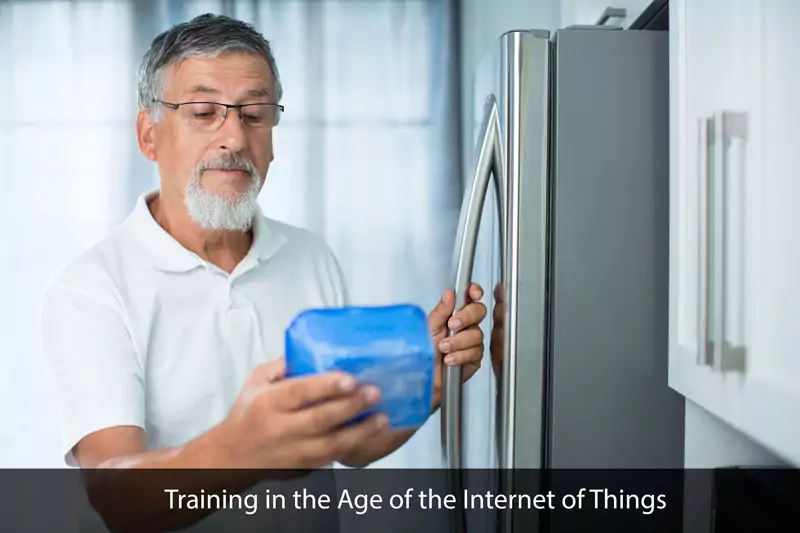Training in the Age of the Internet of Things: Part I

Today, nearly everyone is networked. Indeed, most of us rarely leave home without a mobile device and web access. We’re online all the time and so are our family members. In 2015, parents now track their children’s route home from school remotely and along the way, track missing devices and their human owners. If we once feared a future world of heightened surveillance, it appears as if we have now embraced and accepted this new reality. Being networked has become a more or less taken for granted part of everyday life. Now that we’ve networked ourselves, however, we are moving on to the next stage of the networked society—the so-called “Internet of Things.” 
What is the “Internet of Things”
At its most basic, the Internet of Things (IoT) refers to the networking of objects. On the one hand, the Internet of Things is about wearable computing devices (e.g., the iWatch, Google Glass etc.). On the other hand, it is about networking objects that may not appear to be networkable at all. Imagine if the gas tank in your car had a censor that not only told your car that your gas was getting low but automatically informed your car’s GPS that you needed to go to a gas station and the GPS subsequently altered your route to bring you off course to the nearest gas station. Similarly, imagine if the milk in your refrigerator had a censor that could communicate with your refrigerator to let it know that it was about to expire. The refrigerator could in turn order more milk from your preferred online grocery delivery service. Finally, imagine if you could send a text message from work to turn on your air conditioner or turn up your heat so your apartment was at a desirable temperature when you arrived home from work. In a nutshell, this is the Internet of Things – a world where both objects and people are networked and where increasingly, objects communicate with each other, so to speak, across the network and leave us entirely out of the conversation. Sound good? Perhaps, but if this is the next step in the networked world, what are the implications for work? Moreover, can the Internet of Things help to facilitate new and innovative approaches to workplace training?
Download the The Strategic Value of Workplace Training and Development white paper and additional free resources here.
Implications for Work
Will the Internet of Things change work? The short answer is yes, but it is impossible to fully predict how and to what extent. What is clear is that as more objects are networked, more routine and mundane tasks currently carried out by humans will be eliminated. For example, if the staff refrigerator can be automatically restocked, you will no longer need to ask an administrative assistant to waste valuable time ordering food, milk and coffee. Of course, the same situation will hold true for your organization’s supply closet. Low on pens or paper? The supply closet will send an automatic order to the local office supply store. More importantly, however, as more things are networked, employee theft of supplies will also be reduced. After all, increasingly, things will be traceable. But the implications for work extend well beyond keeping track of an organization’s supplies. The Internet of Things also holds the potential to impact training on a myriad of levels.
Implications for Training
As things become networked, the ability to gather constant data on work processes will increase and in turn, so will the capacity to evaluate and provide feedback on workers’ performances in real time. While it may sound far fetched, in the not so distant future, a networked hammer might conceivably send feedback to a carpenter-in-training’s smartphone offering feedback on his or her hammering technique. Similarly, a medical intern armed with networked tools might receive ongoing feedback on his or her patient care. In other words, the tools we use to perform our jobs will increasingly be able to record what we are doing, track our performance and help provide ongoing feedback. Training, in this sense, will potentially require less human intervention, be able to happen more frequently and consistently, and be more fluidly integrated into one’s everyday work experience.